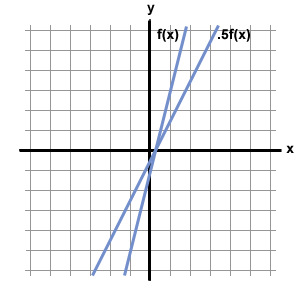Suggestions
Use up and down arrows to review and enter to select.Please wait while we process your payment
If you don't see it, please check your spam folder. Sometimes it can end up there.
If you don't see it, please check your spam folder. Sometimes it can end up there.
Please wait while we process your payment

By signing up you agree to our terms and privacy policy.
Don’t have an account? Subscribe now
Create Your Account
Sign up for your FREE 7-day trial
Already have an account? Log in
Your Email
Choose Your Plan
Individual
Group Discount
Save over 50% with a SparkNotes PLUS Annual Plan!
 payment page
payment page
Purchasing SparkNotes PLUS for a group?
Get Annual Plans at a discount when you buy 2 or more!
Price
$24.99 $18.74 /subscription + tax
Subtotal $37.48 + tax
Save 25% on 2-49 accounts
Save 30% on 50-99 accounts
Want 100 or more? Contact us for a customized plan.
 payment page
payment page
Your Plan
Payment Details
Payment Summary
SparkNotes Plus
You'll be billed after your free trial ends.
7-Day Free Trial
Not Applicable
Renews April 25, 2024 April 18, 2024
Discounts (applied to next billing)
DUE NOW
US $0.00
SNPLUSROCKS20 | 20% Discount
This is not a valid promo code.
Discount Code (one code per order)
SparkNotes PLUS Annual Plan - Group Discount
Qty: 00
SparkNotes Plus subscription is $4.99/month or $24.99/year as selected above. The free trial period is the first 7 days of your subscription. TO CANCEL YOUR SUBSCRIPTION AND AVOID BEING CHARGED, YOU MUST CANCEL BEFORE THE END OF THE FREE TRIAL PERIOD. You may cancel your subscription on your Subscription and Billing page or contact Customer Support at custserv@bn.com. Your subscription will continue automatically once the free trial period is over. Free trial is available to new customers only.
Choose Your Plan
For the next 7 days, you'll have access to awesome PLUS stuff like AP English test prep, No Fear Shakespeare translations and audio, a note-taking tool, personalized dashboard, & much more!
You’ve successfully purchased a group discount. Your group members can use the joining link below to redeem their group membership. You'll also receive an email with the link.
Members will be prompted to log in or create an account to redeem their group membership.
Thanks for creating a SparkNotes account! Continue to start your free trial.
We're sorry, we could not create your account. SparkNotes PLUS is not available in your country. See what countries we’re in.
There was an error creating your account. Please check your payment details and try again.
Please wait while we process your payment

Your PLUS subscription has expired
Please wait while we process your payment
Please wait while we process your payment

To multiply a function by a
scalar, multiply each
output by that scalar. For example, if f (x) = 4x - 1, then  f (x) =
f (x) =  (4x - 1) = 2x -
(4x - 1) = 2x -  . If g(x) = x - 2, then 3g(x) = 3(x - 2) = 3x - 6. If h(x) = x2 + 2, then -2h(x) = - 2(x2 +2) = - 2x2 - 4.
(3x)h(x) = (3x)(x2 +2) = 3x3 + 6x.
. If g(x) = x - 2, then 3g(x) = 3(x - 2) = 3x - 6. If h(x) = x2 + 2, then -2h(x) = - 2(x2 +2) = - 2x2 - 4.
(3x)h(x) = (3x)(x2 +2) = 3x3 + 6x.

The y-coordinate of each point on the graph of  f (x) is the result
of multiplying the y-coordinate of f by
f (x) is the result
of multiplying the y-coordinate of f by  .
.
To multiply a function by another function, multiply their outputs. For example, if f (x) = 2x and g(x) = x + 1, then fg(3) = f (3)×g(3) = 6×4 = 24. fg(x) = 2x(x + 1) = 2x2 + x.
When we take f (g(x)), we take g(x) as the input of the function f. In other words, we take x as the input of g and evaluate g(x), and then we take this result as the input of f and evaluate f (g(x)).
For example, if f (x) = 10x and g(x) = x + 1, then to find f (g(4)), we find g(4) = 4 + 1 + 5, and then evaluate f (5) = 10(5) = 50. Similarly, f (g(12)) = f (12 + 1) = f (13) = 10(13) = 130. In general, f (g(x)) = f (x + 1) = 10(x + 1) = 10x + 10.
Example: f (x) = 2x - 2, g(x) = x2 - 8.
f (g(3)) = f (32 - 8) = f (1) = 0.
f (g(- 4)) = f ((- 4)2 - 8) = f (8) = 2(8) - 2 = 14.
In general, f (g(x)) = f (x2 -8) = 2(x2 -8) - 2 = 2x2 - 18.
g(f (3)) = g(2(3) - 2) = g(4) = 42 - 8 = 8.
g(f (- 4)) = g(2(- 4) - 2) = g(- 10) = (- 10)2 - 8 = 92.
In general, g(f (x)) = g(2x - 2) = (2x - 2)2 -8 = 4x2 - 8x - 4.
f (g(x)) is denoted fog(x) and g(f (x)) is denoted gof (x). Note that it is not necessarily true that fog(x) = gof (x), as shown in the above example.
Please wait while we process your payment

